(Editor’s Note: This is the final story in a two-part series examining the murder of Roberta Elam in Ohio County on June 13, 1977).
He was 54 years old when his wife immaculately conceived and then gave birth to a son he would adopt and foster until his death 18 years later. She was Mary, the mother of Jesus, and he was St. Joseph, a carpenter when alive and now the patron saint of workers, unborn children, fathers, and immigrants.
“Josephology” is a real thing, too, with three study centers located around the world. He was known as working man who followed God’s commands, but there is little history about Joseph other than what is composed within scripture. In the New Testament it states that Joseph lived as a, “righteous man” (Matthew 1:18 ).
Parochial high schools and colleges have been named in his honor, and the Wheeling diocese recognized him during the 1840s by naming its landmark cathedral in his honor. The first church was razed in 1923, and the current St. Joseph’s rests on the same property. Catholic kids often were given necklaces with the St. Joseph medal hanging from the chain as gifts for First Communion, First Confession, or for Confirmation, and that is because St. Joseph is big deal here.
Children. Parents. Immigrants. Workers.
Although a female, Roberta Elam adopted similar devotions when hired by the Diocese, so when she filed a request for her retreat, no one was surprised. She had experienced a bit while living in four states during her 26 years of life but was at least prepared to think about a far different existence. Elam was at Mount St. Joseph’s to think about her life, the religious order she was entering, and whether or not a life of poverty and service was her destiny-come-true.
“This case will be an open case for us until there is a prosecution and a conviction of the person who did this horrible crime,” said Det. Doug Ernest with the Ohio County Sheriff’s Office. “A lot of work has gone into this case by many people through the years, so I think it would be a very good thing to finally arrive at a resolution. And that’s why we continue to follow up on each and every tip or piece of information that comes in.

The Perfect Crimes?
Reece Blair was the Ohio County Sheriff for several years during the 1970s, and he released a sketch soon after the rape and murder that was based on interviews conducted immediately following the fatal incident. The drawing depicted a white man with dirty black hair, full eyebrows, and a beard and mustache. A deputy with the Ohio County Sheriff’s Office also was told there was a faded-blue automobile with bumper stickers parked along nearby Pogue Run Road, a car that was never found.
Thousands of tips, hundreds of interviews, and an outraged and fearful community yielded nothing that panned out. At the time, the local sheriff’s office was joined by the West Virginia State Police and the Federal Bureau of Investigation, and still no arrests ever have been made, and no motive ever has been established.
“At that time murder was not a federal offense, but it was against state law,” explained retired FBI agent Tom Burgoyne. “Our Wheeling office worked very well with all of the local law enforcement agencies then, so we told them that if they wanted us to help with out-of-state suspects, we would. And we did take a look at a few people, one that was a pretty strong suspect in the Cleveland area.
“If you talked to anyone who was involved with the case from the very beginning, they will tell you that it was mishandled pretty badly, but those offices operated very differently back then,” he reported. “In 1977, when the voters elected a new sheriff, he brought his own people in for the deputy positions, and that meant a guy could have been a farmer one day and a sheriff’s deputy the next day.”
But when Burgoyne, a federal agent for more than 30 years before his retirement, was elected Ohio County Sheriff in 2001, one of his first actions was to re-open the unsolved murder case, believing something in the file could tip the scales.
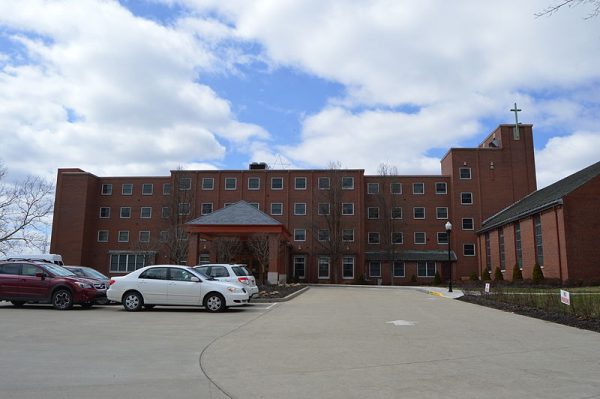
“My wife and I are very familiar with the sisters at St. Joseph’s, and there are a few still there who were there when the murder took place,” he explained. “They tell us, even today, that they think about it every single day, so I knew it was important to them, and I truly believed a new set of eyes might help move it forward finally.
“When you have people tell you that they still have issues with sleeping at night because of how vicious that murder was, you know it’s still important to people,” Burgoyne continued. “It was shocking; I can tell you that, and people are still talking about it. I get asked about that one case probably just as much if not more than any other I’ve been involved in.”
What Burgoyne and his investigators discovered was DNA of the murderer, and since then the perpetrator’s DNA profile has been shared with nearly 200 crime labs across the country and has been added to the national CODIS system, a database of combined DNA indexes, but thus far a few dozen leads have been cleared and eliminated.
“All I will say is that it’s very good DNA, too, so I am still hopeful that one day a positive result will be returned. Every time we would send it out, I really thought we would finally have the guy, but all we got back were negatives,” he recalled. “But when the murder happened, they didn’t have DNA science, so some of the evidence was never tested for it.
“When we re-opened the case and took a hard look at the file, we quickly realized what was possible, and then there it was,” Burgoyne added. “And I’ve been getting feedback lately that a lot of people feel as if the case needs to be concentrated on again. I’m not sure if that’s been done, though, since I left the department, but if not, it should be. June 13, 1977 — that’s a date that rests in infamy around here, that’s for sure.”
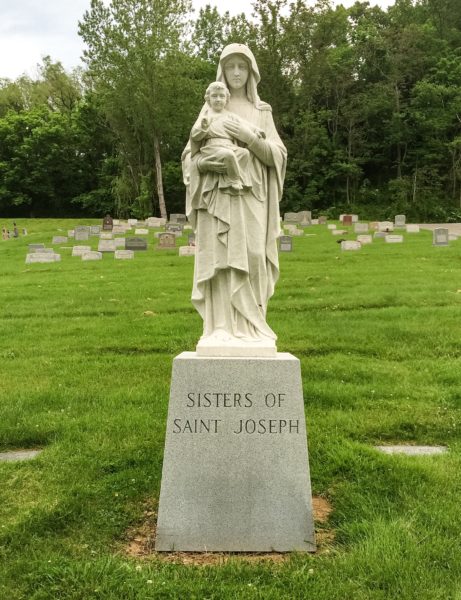
Details and Open Investigation
There are details to this case known by only a few, and that is because crime scenes are complex, and too much public information erodes even evidence. Although this case seems so close to being solved because of proven science, there remains a grave at the Mount Calvary Cemetery that’s not been served proper justice.
One investigator involved with the re-opening of the cold case in 2002 requested anonymity when interviewed, but not because he planned to reveal anything inappropriate to the investigation. Instead, the request was made and granted because of the active debates among law enforcement officials concerning the actual facts of the case.
This is what he reported:
The crime scene was hidden from sight from anyone on the golf course.
All of the golfers who played the Trent Jones course that day were investigated by authorities at the time these crimes took place.
The man who found Elam was a facility employee who, after having lunch with his wife, was collecting used telephone line in his pickup truck. That’s when he found her.
The body was not completely naked. It was a rape, so, yes, clothes were removed.
Roberta Elam was a low-risk victim who had an ex-boyfriend in New Jersey who proved to be a non-issue in the case, and she wasn’t a barfly and not into drugs. Whether she was alive or dead at the time she was raped is an unknown, but there are valid theories employed during the investigation that concern motive.
- Was it a man suffering from mental illness?
- Was she targeted specifically?
- Or, perhaps the perpetrator knew women sat there in complete solitude?
One primary suspect was already a prisoner in the state penitentiary in Moundsville in the early 1980s, and the man was already on law enforcement’s radar. His roommate at the time went to jail officials and told them his cellmate confessed to raping and murdering Elam. The state police transported him quickly to an interview, and, according to case records, he offered no admissions but did offer interesting statements.
The next day, however, when he was scheduled for a polygraph test, he shushed up. That was the end of that, and the development slowed the investigation to a near halt. He was supposed to be “the guy.”
Once the case was re-opened by Burgoyne, most of the evidence was re-tested using DNA technology, and DNA was found. Soon, there was another suspect, one a close DNA match to a male located in California at the time. When he was located, he was dead. He had taken his own life, but when the police report was obtained here, it was noticed the investigating detective had extra vials of blood that had been retained in evidence. It was not a match.
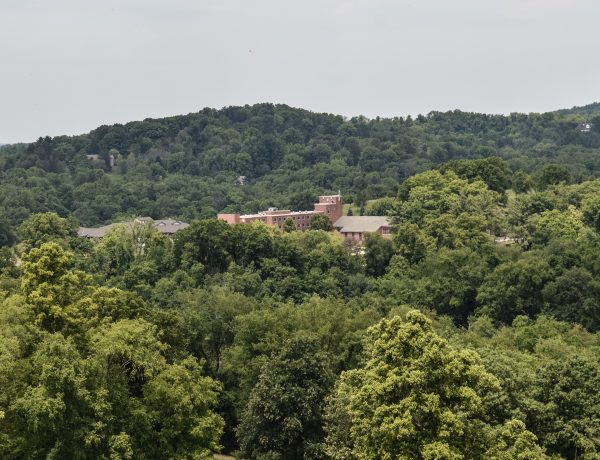
There was another individual suspected of strangling his rape victims to the point of unconsciousness in Moundsville and in Wheeling, but the individual had not murdered someone and had not committed his crimes in rural areas. When Burgoyne and his investigators searched, for him they discovered that he had served time in prison but has passed away. His ex-wife and his two children were alive though, so the children’s DNA was compared to the Mount St. Joseph’s murder.
Again, no match.
The State Police and the Ohio County Sheriff’s Office have consistently assigned investigators to this case since it was re-opened, and that process has included a total re-examination of every single name included in the report and evidence files. Law enforcement is aware of the perpetrator’s blood type, Type A, so they ran through even more records to eliminate and add possibilities for DNA testing.
Priests, brothers, employees, neighbors, other people who lived in the area all were removed, and more than 40 people were cleared, and in the end, no primary suspect existed in 2014, and there is not one today.
There is, though, that one individual who has never been located. The man reportedly suffered from mental illness and was homeless and often seen in the Oglebay Park area. Although he possessed a police record at the time of the rape and murder, the man has never been arrested since. His family has not heard from him either, and he has not been found.
Elam was laid to rest in the Mount Calvary Cemetery in the section where many nuns have been interred.
The case, this investigator insisted, still could be solved, although with each passing day, the chances diminish. But there is the CODIS system, and new DNA profiles are added to the database each day of every year. If the killer is still alive, he’s certainly aware of what he did, and there remains today a portion of the local population who may know something they have yet to reveal.
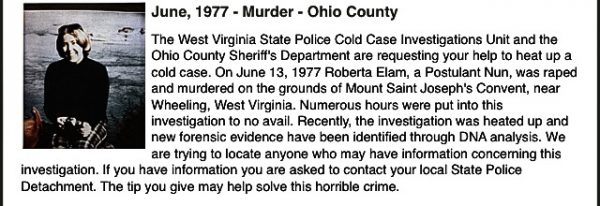
An Open and Active Case
Bill Hanna was an English professor at West Liberty State College at the time the crimes were committed less than one mile from the front door of his residence, and he does not recall how long it took him, his wife, and two young children to feel absolutely safe at their home. But doors and windows were locked, the children were supervised when outside more than ever before, and their interest in the ongoing investigation remained high.
“I know we started to feel better and more comfortable after the police had stopped walking all over the neighborhood, but that was only after a couple of weeks,” he recalled. “We talked about it a lot, wondering if it would ever be solved or if this guy had gotten away with it. And every time it’s been mentioned in the media, we’ve paid attention to it.
“But you have to wonder about it now. Has too much time passed for it to ever be solved? I guess, maybe,” Hanna added. “It could be a done deal by now, but who knows? Time will tell.”
The public attention to the case involving Sister Robin’s brutal murder has depended mostly on local media, and that will take place once again on or near the incident’s 40th anniversary next year. The people who have investigated this case and those who are at this time insist they appreciate the coverage because one never knows what might jog a person’s memory or when that call might be received.
Ernest, who joined the department after Burgoyne re-opened the case in 2001 and has been a detective for the past four years and in charge of the Elam case for nearly two years, admitted his age presents him with an unfamiliar challenge. Ernest is 37 years old and was not yet born at the time Sister Robin was sexually assaulted and slain.
“It is difficult for me to get into the mindset of how things were back then because so much has changed since,” he explained. “And not just with society, but also how law enforcement goes about what we do. It’s completely different these days than it was back then.
“I was born in 1979, so I’m not totally lost when it comes to those times, and I did hear about the crimes when I was pretty young, so that tells me people were very interested in it then,” Ernest continued. “And people are still very interested in it these days, too, because some of the investigators have done TV shows about it, and there have been articles about it, too. And those things are great because you never know what it may help people remember. The memory can be a funny thing.”
Elliott remains astonished that an arrest has yet to be made.
“I am surprised that the case has never been solved, but looking back at that time, I realize that the technology we have now wasn’t available in the late-1970s,” Elliott said. “But I do know that everyone would love to have closure, and they certainly would like to know who did it. It’s baffling to me still.
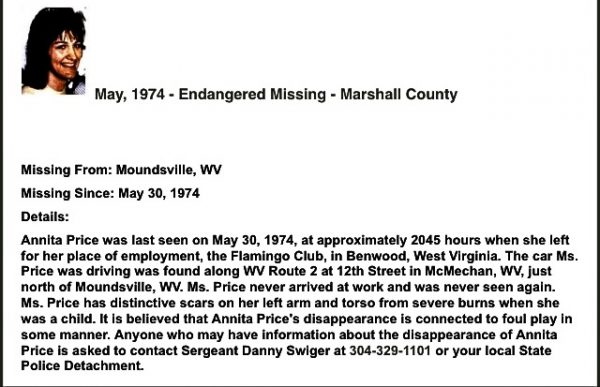
“Was it someone who lived in the area? Or was it a random person who was just coming through town? And I still don’t understand why they picked the place they did to do such a thing,” she continued. “I have never been contacted again by the investigators. I thought that might happen because they might want to do another round of interviews, but I’ve never received that call. That just seems a little odd to me.”
Finally finding this rapist and murderer now relies on one thing — a positive DNA match involved in a case anywhere in the United States. There exists no real information about the perpetrator, how old he was, or why he was in the area at the time, and what the man’s motives were are unknowns, and those answers may never be reported. The killer’s DNA profile has been in the system for nearly 10 years now, more than 20 suspects have been scratched off, and no leads are publicly known to exist.
“The best way to solve this case would be if we were able to finally find a DNA match,” said Ernest. “It is possible that the person who did this may come forward with something of a deathbed confession. That’s happened in other cases, so I guess it’s not out of the realm of possibilities, but I really believe that if this case gets solved, it will be from the DNA.
“Unless this person was pretty young when he committed these crimes, he is probably pretty old right now if not dead already,” he added. “And, of course, if someone knows something, we encourage them to call us with the information. You never know where new information could lead us.”
Burgoyne, also a member of a local Cold Case Unit, remains disappointed because, to this point, the rapist and murderer has yet to be brought to justice.
“Once we got the solid DNA profile of our guy, I really believed we were going to solve the case. No one who would do this kind of thing was a one-time offender,” Burgoyne said. “There had to be something. I really believed that. We didn’t know if he would turn out to dead or if he was still alive, but we really wanted to finally close the case.
“One after another, though, came back negative matches,” he added. “I always thought about the fact that when it happened, they didn’t have the science we have now to use. But then when we do, still nothing, and from this point we just have to keep waiting for that match unless there’s someone out there that knows what we need to know.”





